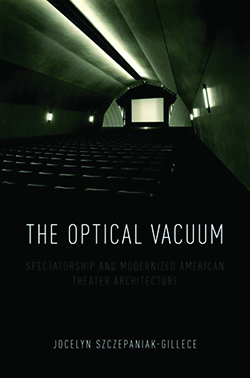The Optical Vacuum: Spectatorship and Modernized American Theater Architecture

Jocelyn Szczepaniak-Gillece, Oxford University Press, 2018
From the 1910s through the early 1930s, theater owners believed that audiences had to be surrounded by glittery opulence to feel their ticket prices were worthwhile. Over time, palace extravagance was replaced by today’s utilitarian, black-box venues. Szczepaniak-Gillece, an assistant professor of English and film studies, credits this aesthetic evolution to architect Ben Schlanger, who introduced functionalism to theater design. Schlanger’s goal: Focus the viewing experience on the film itself rather than the surrounding garnish.